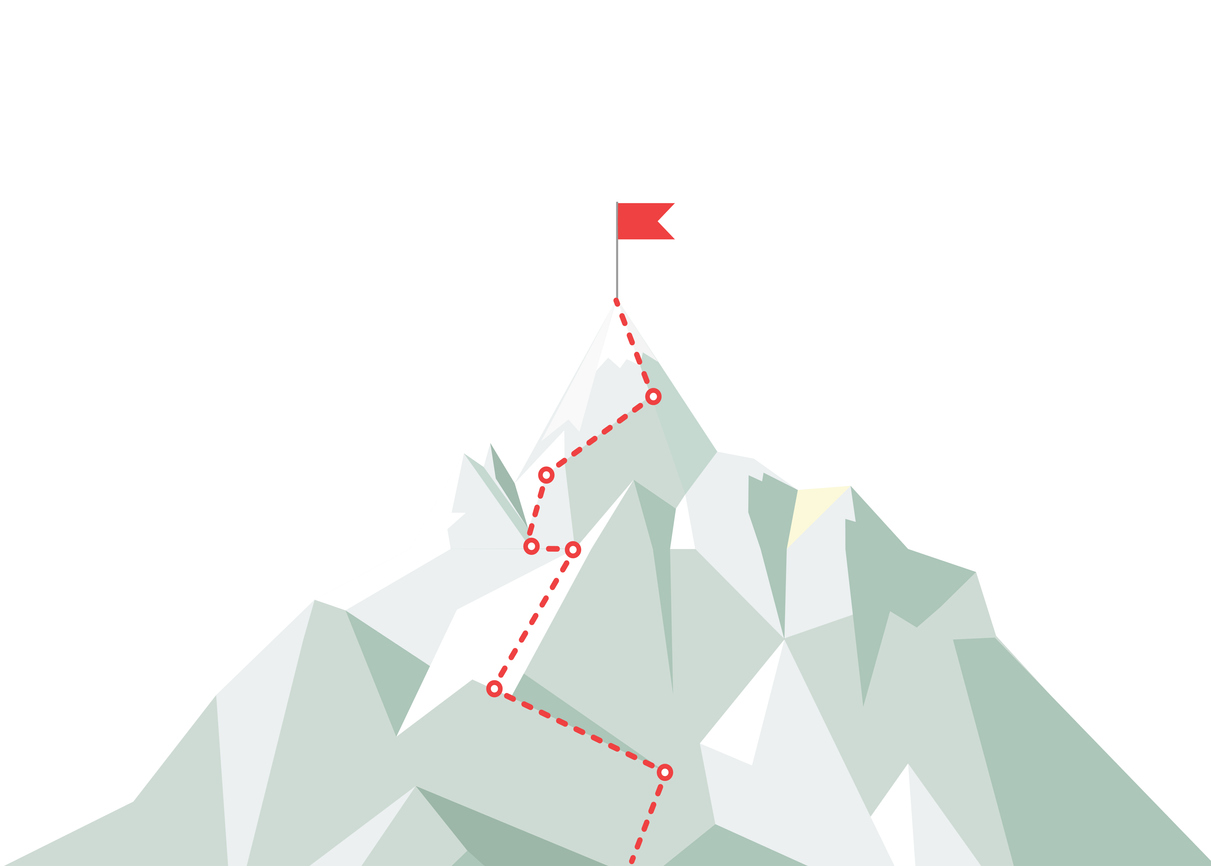Far too often we see digital teams releasing software that is clunky, inefficient to use and over complicated.
Simply put, these software are not optimised for humans to use. Instead, they are optimised for technology and for the people building them - and with that, digital products and services are inaccessible and unusable for most of us.
But it doesn’t have to be this way…
Experience should be the differentiator, not the tech
Working to rapid delivery processes and stuck using legacy software, success being measured by the number of features delivered, and a lack of questioning around development decisions are all signs that a business is letting technology drive product design, rather than viewing it as an enabler.
There’s a common misconception - in software applications in particular - that it’s the technology and features that sets a product apart from its competitors. But this is most often not the case - especially in competitive and mature markets.
If you don't understand your users in-depth and focus on the experience as well as the features, products will have blind spots - which in business can be both risky and highly damaging. It takes a special skill set to join these dots - but it also happens to be something UX designers do best!
So why isn’t user experience being prioritised?
The need for design leadership
UX designers at organisations of all sizes - with very few exceptions - face the same two core problems:
Their organisations are not following a user-centred approach, ie. the UX maturity of their organisation is low; and
They’re having to do tactical work too often and are not involved in the strategic plans
More often than not, the reason for this is that there is a skillset missing in the leadership team - those who are commonly responsible for the strategy of new products and the development roadmap. The skill is of a designer; a Chief Design Officer.
But this needs to change; UX needs a seat at the leadership table.
Without it, you have a dysfunctional table lacking the core skills of UX. And not only does this lead to teams lacking innovation and missing out on value-creation opportunities, they also can't be truly user-centred in their design decisions, and will often focus on the fastest route to delivery (speed) rather than spending time to come up with the best solution.
What we often see in organisations where Design doesn’t have a seat at the strategic table is that a product lead or stakeholder will go straight to the development team with their requirements, totally bypassing Design in the process.
For example, a product owner (that may or may not have the right skills of a product manager) comes up with the requirements by listening to the business. They then pass on the requirements to the Development (technology) team who decides how it will be built.
And so although UX wants to get involved, the strategy gets set without any of their input; resulting in design thinking not being built into the development roadmap - and UX being deprioritised or ignored entirely.
Even when there is time to do the design, when it comes to implementation, often the design details get missed or are ignored completely.
When internal teams are not diverse themselves it impacts the accessibility of their products. This may not only be in terms of additional friction points being present in the user experience design, but in actually making the interface entirely inaccessible to some users - which is obviously a potentially huge issue.
Corner cutting is a shortcut to compromise (and longer-term UX issues)
Without an experienced designer involved in the decision making, a lot of the time teams get stuck with, or using, pre-built solutions, as a result of getting caught up in the faulty thinking that “this feature/component already exists, so we’ll just reuse it”. But out of the right context, those features or components make little sense or add friction to the end to end user journey.
The thinking is often that “if [a Big Tech company or competitor] made it, it must be good”, but this is not always true. These off-the-shelf solutions (pattern libraries, or copying competitor solutions, for example) aren't really that effective as they can't be (truly) fit for purpose.
It’s one thing to take design inspiration from something that already exists - and even use the technical parts of it - but quite another to use it as a shortcut to developing your own products.
When you cut corners in design, the user experience is compromised to give strength to technical decisions. Copying existing solutions also means you end up looking backwards (at what competitors have done in the past), not forwards to what is the next best innovative solution for you and your product(s).
You need to develop your own solutions in order to get ahead. So don't focus on the competition, instead work on developing your own brand personality.
The need for Design Thinking
Design Thinking and user-centred approaches should be at the core of product development; it’s not what the technology can do that’s important, but linking user needs, tech needs, and business needs. Visual thinking and the ability to concretise ideas that connect these dots is something UX designers do best.
And it’s a lack of Design Thinking that leads to decisions being based on technology without first exploring whether it will truly be fit for purpose.
UX designers are the best people to ensure this doesn't happen as they have the tools and methods to empathise with users, to synthesise the findings in an objective way, and to communicate the outcomes in the best visual format.
Similarly, although a business might have all the right roles in place, it may not have the right skills, with people unable to link the user perspectives to the strategy whilst still accounting for innovation and business needs.
To design well you need to challenge traditional processes but this is difficult, not least because designers’ soft skills don’t usually cover commercial and business acumen; instead they are creative, collaborative, and empathetic. In fact, what makes designers so good at understanding user needs paradoxically makes them bad at internal selling and using business speak, leading to them so often being overridden or ignored.
Some elements of design can help the wider business understand, in concrete terms, what is needed. But if designers are not involved in the initial conversations, this information will be missed, and others’ needs gain prominence.
Architects and order takers
These types of ineffective design approaches are often ingrained in organisations whereby a “[this] is a requirement, therefore [this] is what we'll do” approach is the norm, rather than taking the time to really understand if - and why - something is needed, and therefore how best to deliver it.
To illustrate the point, consider the following:
If you want to rebuild the kitchen in your home, you’re likely to get a builder and give them instructions on what exactly you want and where. But if you want to build a premium restaurant in London, you will get an architect and an interior designer in before you build it and you’ll plan it really well to provide the best experience possible so you can stand out.
Traditionally, designers are trained to be “architects” (strategists) or “doctors” (problem solvers) - but most of the time they are treated as “order takers”.
Often people (non-designers) don't think in terms of “experience design”, instead thinking purely about the product design, so the experience gets forgotten about. This leads to questions such as Does it add value? Does it fulfil the need? Is it easy to use? Is the aesthetics aiding usability? going unasked - and therefore unanswered.
This is where using the double diamond helps to identify what the real problems are and how to best solve them before jumping straight into using known solutions.
No, not everyone is a designer
As touched on earlier, roles and skills are two different things, and it’s worth pointing out here that Jared Spool’s notion that “everyone is a designer” is far too often taken out of context. (And in truth, that’s a whole other post for another time!)
While yes, it’s true that everyone can participate in design - and even when designers aren’t present design will happen anyway - not everyone is a professional designer.
Good designers bring with them so much additional value, such as:
Visual thinking
Challenging assumptions
Not being constrained by well-established or traditional thinking
Creative and lateral thinking
Design and usability principles based on scientific research
Methodologies and techniques to best empathise, synthesise and communicate research
And, going back to the kitchen analogy, just because you can cook dinner at home and your family likes your food, that doesn’t make you a professional chef… And definitely not a chef at a premium restaurant in London.
Just because you can (build it), it doesn’t mean you should
There is no denying that there are lots of problems in the world that design could help resolve. And yet far too common we see a “build-first, find market-fit later” mentality.
Some teams even work on emerging tech for the sake of it, because it’s “cool”. They get excited by the new possibilities of the new tech and forget the core to building a business: meet the needs of your customer.
As design can be such an enabler (when applied correctly), it can be hard to understand why so much investment is channelled into this type of “tech innovation”, rather than looking at solving existing problems.
In such instances, you need to ask, “What is this digital thing doing, and for whom?” If the answer is that it’s effectively just a vanity project for the team, it’s time for a rethink.
The driver of innovation needs to be users’, customers’, peoples’ and societal needs. And UX needs to be embedded from the start, not just an afterthought.
Using design skills for positive impact
Designers need to have their input heard because they are uniquely skilled to challenge traditional perspectives and bring true innovation to the table. They can see something others can’t - and will ensure that users’ needs always come first, with technology used as an enabler to achieve the desired outcomes.
The rest of the business needs to understand that designers don’t just propose ideas to be self-indulgent; they do it because they care (a lot) about getting the right outcome for the user and by standing up for their seat at the table aren’t saying “look at me, I'm a designer”, what they’re actually saying is “I'm not doing this for me, I'm doing it for you. I’m doing it because we care about our users”.
So, what can you do about it?
Well, the first step would be to ask - yourself the following questions:
How are design decisions being made in your organisation?
Do you have the right design skills in place?
What’s the UX maturity of your organisation?
Is design being involved in (and is able to actively influence) your product decisions?
Next, go to your designers and ask them what gets in the way of full effectiveness in their role.
Listen to their answers, carefully consider every point and discuss what you will do about it. Then go and do it!
Just remember that technology is a great enabler, but by putting users at the centre of what you are creating means you’re solving real problems.





